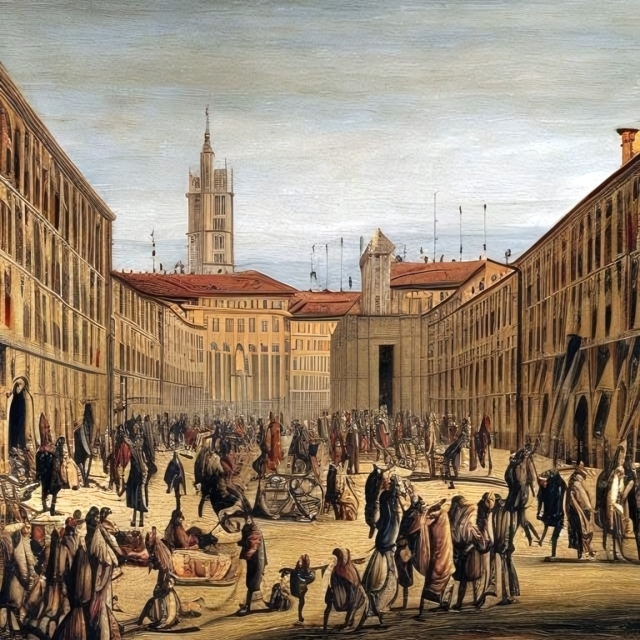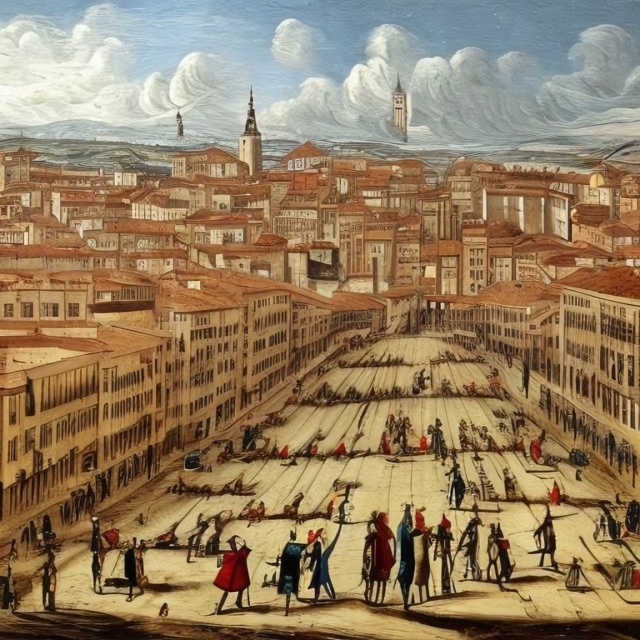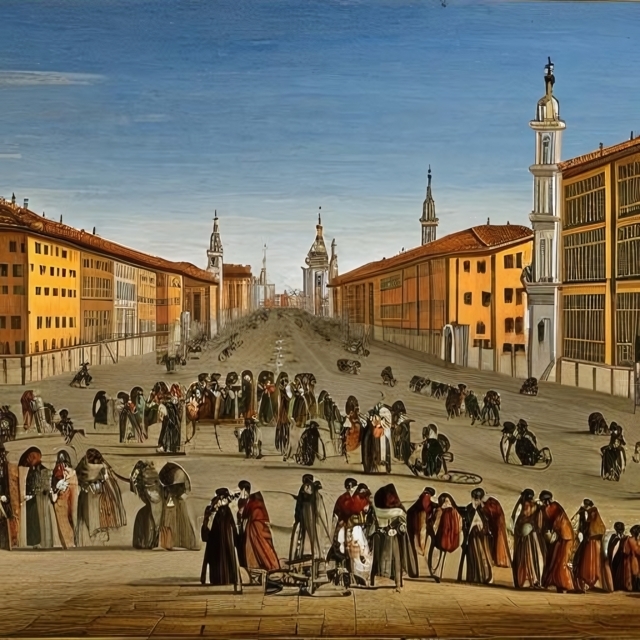I am writing this diary to record my experiences and observations as a plague doctor in Turin, the capital of the Duchy of Savoy, during the terrible epidemic that has afflicted this city and its surroundings since the summer of 1656. I hope that this document will serve as a testimony and a lesson for future generations, and that it will also help me to cope with the horrors and the sorrows that I witness every day.
I arrived in Turin in June 1656, after receiving a letter from the Duke’s Council of Health, inviting me to join their efforts to combat the plague that had broken out in the city. I had studied medicine at the University of Padua, where I had learned about the causes and the cures of this dreadful disease, which is caused by a bacillus transmitted by fleas that infest rats and other animals. I had also learned about the preventive measures that should be taken to avoid contagion, such as isolation, quarantine, sanitation, and wearing protective clothing and masks.
I was eager to put my knowledge and skills to use, and to help the people of Turin, who were suffering from a high mortality rate and a great fear of infection. I was also curious to see the city, which I had heard was one of the most beautiful and prosperous in Italy, with its elegant palaces, churches, and gardens, its rich cultural life, and its strategic position between France and Spain.
However, when I arrived in Turin, I was shocked by the sight that greeted me. The city was like a ghost town, with empty streets, closed shops, boarded windows, and silence broken only by the tolling of bells and the cries of the sick and the dying. The air was foul with the stench of corpses and garbage, and swarms of flies and rats were everywhere. The few people who ventured outside wore masks or scarves over their faces and avoided any contact with each other. The authorities had imposed strict regulations to prevent the spread of the plague, such as banning public gatherings, closing schools and theatres, prohibiting travel and trade, and burning infected houses and belongings. They had also set up lazarettos (plague hospitals) outside the city walls, where the sick was taken by carts or by force, often never to return.
I was assigned to one of these lazarettos, where I had to examine and treat hundreds of patients every day. Most of them had the characteristic symptoms of bubonic plague: fever, headache, vomiting, swollen lymph nodes (called buboes), black spots on the skin (called petechiae), and gangrene. Some of them had pneumonic plague, which affected their lungs and caused them to cough up blood. Others had septicaemic plague, which infected their blood and caused them to bleed from their nose, mouth, eyes, and ears. Many of them died within hours or days of their admission. Some of them begged for mercy or for God’s forgiveness. Others cursed or raved in delirium. Others were silent or resigned.
I tried to do my best to help them, by giving them medicines (such as theriac or vinegar), by applying poultices or lancets to their buboes (to drain the pus), by bleeding them (to balance their humors), by comforting them with words or prayers (if they wanted), or by simply holding their hands (if they had no one else). I also tried to protect myself from infection, by wearing a long robe covered with wax (to repel liquids), gloves and boots (to cover my hands and feet), a hat (to cover my hair), spectacles (to protect my eyes), and a mask with a long beak filled with aromatic herbs (to filter the air). I also carried a cane (to examine patients without touching them), a lantern (to see in the dark), and a cross (to ward off evil).
However, despite all my precautions and efforts, I soon realized that I was fighting a losing battle. The plague was too powerful and too widespread to be contained or cured by human means. It seemed to have a will of its own, striking randomly and mercilessly, sparing no one, not even the rich, the powerful, the young, or the innocent. I saw many of my colleagues and friends fall victim to the disease, as well as many of the people I had come to know and care for in the city. I also saw many acts of cruelty and selfishness, as well as of courage and compassion, among the survivors. I saw people abandon their families and friends, loot and burn houses, accuse and kill each other, or flee the city in panic. I also saw people help and comfort each other, share their food and water, nurse and bury the sick, or stay and fight the plague.
I do not know how long this epidemic will last, or how many more lives it will claim. I do not know if I will survive it, or if I will ever see my home and my family again. I do not know if there is any meaning or purpose in this suffering, or if there is any hope for the future. All I know is that I have a duty to fulfil, as a doctor and as a human being, and that I will not give up until the end. I pray that God will have mercy on us all, and that He will deliver us from this evil.
This is my diary, and this is my story.
References:
– Plague in seventeenth-century Europe and the decline of Italy: an epidemiological hypothesis | European Review of Economic History | Oxford Academic
– Plague and Lethal Epidemics in the Pre-Industrial World | The Journal of Economic History | Cambridge Core
– Lessons from the 1656 Neapolitan Plague: Something to learn for the … – PubMed
Bibliography:
– Cipolla, C. M. (1981). Fighting the plague in seventeenth-century Italy. Madison: University of Wisconsin Press.
– Del Panta, L. (1980). La popolazione di Napoli dal 1648 al 1815. Rivista di storia economica, 1(2), 157-186.
– Fratianni, M., & Spinelli, F. (2006). Italian city-states and financial evolution. European Review of Economic History, 10(3), 257-278.
– Gualtieri, A., & Spinelli, F. (2020). Lessons from the 1656 Neapolitan Plague: something to learn for the COVID-19 pandemic? Vaccine, 38(49), 7789-7790.
– Slack, P. (2012). Plague: a very short introduction. Oxford: Oxford University Press.
Tags
Divi Meetup 2019, San Francisco
Related Articles
Unappreciated Greatness
Life and Legacy of Jahangir of the Mughal Empire. Jahangir ruled over one of the largest empires in human history during his lifetime, yet few people outside of South Asia have heard of him. I aim to shed light on the life and legacy of this remarkable figure,...
The Timeless Beauty of Bustan
Unveiling the Secrets of Saadi Shirazi's Masterpiece.In the realm of Persian literature, few works have captured the essence of love, spirituality, and morality quite like Bustan (The Orchard) by Saadi Shirazi. This 13th-century masterpiece has left a lasting impact...
The Shifting Sands of Faith
Paganism and Christianity in the 8th Century Bulgarian Empire. Under the vast, star-dappled sky of the 8th century Bulgarian Empire, the wind whispered tales of clashing deities and murmured prayers to a singular God. In this crucible of faiths, paganism, rooted deep...
Stay Up to Date With The Latest News & Updates
Explore
Browse your topics of interest using our keyword list.
Join Our Newsletter
Sign-up to get an overview of our recent articles handpicked by our editors.
Follow Us
Follow our social media accounts to get instant notifications about our newly published articles.









